In today’s blog, we will illustrate why UX is important for your website and how to implement a successful SEO campaign.
>Share this post<
by Irina Ciutaco
May 24, 2021
The connection between SEO and UX started about 20 years ago when they made an entrance to the eCommerce world back in 1990. One of the differences between them was that SEO showed an important significance in the marketing domain, while user experience (UX) was mostly focused on portraying more engaging know-how to users on the website.
In today’s blog, we will illustrate why UX is important for your website and how to implement a successful SEO campaign.
In today’s blog, we will illustrate why UX is important for your website and how to implement a successful SEO campaign.
What exactly means user experience?
UX is is the interaction and experience of users on your website. A simplified website will bring an intuitive user experience while an unplanned website will have a bad or underprivileged user experience.
User experience is based on on-site architecture, customer journey, responsive design on desktop and mobile devices. In a nutshell, UX is outlining the simplicity or the complication of navigating through the user interface elements.
What is the difference between UX and UI?
UI is the abbreviation for user interface and it focuses on the graphical design of any application. It consists of more factors like fonts and design styles, text entry fields, images and animations. To sum things up, everything that is visual belongs to the UI. UI and UX are two distinctive functionalities. UI is about design layout and UX is the user’s perspective on the website the moment they are using the website.How can we mix and match UX with an SEO strategy?
During these last few years, Google has improved its ranking factors a lot.
Nowadays, Google is getting more focused on the user, using artificial intelligence (AI), machine learning (ML), natural language processing (NLP) and different technologies which are meant to bring the best results.Google has brought the EAT approach and rankings such as search intent, page speed, mobile responsiveness became very important for an SEO strategy, bringing as well a better user experience.
Why is a user experience beneficial for an SEO strategy?
The difference between the first and second position in Google SERP is given by a strong user experience because it helps users spend more time on the website. This positively indicates that your website will be in Google SERP.
How to incorporate UX into an SEO strategy?
Nowadays, it is mandatory to incorporate both UX and SEO while elaborating SEO campaigns or any digital marketing strategy. Google is continuously updating its user experience and adding effective SEO strategies to provide a more immersive experience.A good showcase of user experience and SEO design is Kaliedy shop, an Irish online baby nursery and toy business where busy parents and families can shop for baby essentials, nursery items, toys, and books. What is innovative about this website is that the user is guided in an intuitive way to the correct landing pages. The colour palette, the main categories and the quick view option are making users spend more time on the website. If you want to discover more about Kaliedy, read their case study.
How to understand who your audience is
One of the most challenging parts of any successful marketing campaign is mastering the target audience. The majority of companies are spending an important amount of time searching for the audience before seeing who their right target is.It’s vital for marketers, businesses and content persons to know who the target audience is.
The right questions that you should ask are:
- Who is my right target audience?
- What do they wish to see on my website?
- What are they searching for?
- How are they checking the information?
- Why is the bounce rate so high on my website?
- Was any action taken on the link?
These are the top questions that the Google algorithm takes into account to understand if the search results are coordinated with the user’s intent.
For example, Marbel has a great design model which is focused on improving readability. Their main goal is to improve the user experience by driving them to the right landing pages. They have added popular CTAs that convinced the user to take action.
How to do keyword research
As we have detailed above, learning more about your possible visitors who are most likely to land on your website is a factor that helps to build your UX and SEO strategy. If your website is not optimized with the best keywords, your chances of ranking on Google are massively decreasing.
The best SEO tools for keyword optimization are Google Keyword Planner, Moz Keyword Explorer, Ahrefs.
One of the most efficient ways to choose the right keywords which can match your SEO strategy is to find the keywords that need ranking. Search queries related to your business should be taken into consideration to understand how the user intent can influence the use of the keywords.
To sum up, it is very important to do keyword research before implementing your SEO strategy and combine it with UX, but it will be worth it.
How to create a site architecture
You should design a website and optimize it for search engines as these two aspects always come together. The website’s architecture indicates the structure of your category, landing and product pages.You will need to create an easy site architecture to be easily found on Google Search Engine Results Page. On top of that, links should also help Google to crawl smoothly from higher to lower authority pages.
If you need some help with the technical side of how a website should look, you can check in Google Search Console. Creating a great H tags structure, followed by taglines and a popular call to actions will help to get a bigger audience on your website.
Bear in mind that your homepage needs only four clicks.
Do not forget about mobile responsiveness
Last but not least in our UX guide, is the mobile-friendly design. Overall, 50% of all traffic is assured by mobile search and websites that do not have this feature will be affected.After all, mobile-first indexing is mandatory for all websites.In case you want to check your website’s mobile responsiveness, you can use Google’s Mobile-friendly testing tool.
Conclusion
As we have mentioned above, having a good UX design is very important for setting your SEO strategy. By following this advice, your website will gain more organic traffic and will step up in front of your competitors in Google SERP. Follow Kooomo Blog for the latest SEO.
As we have mentioned above, having a good UX design is very important for setting your SEO strategy. By following this advice, your website will gain more organic traffic and will step up in front of your competitors in Google SERP. Follow Kooomo Blog for the latest SEO.
More to explore
Here’s an overview of the latest improvements that are now available in the Kooomo platform.
In the next few years, we are foreseeing an impressive increase for the global retail industry. While this can be beneficial for the global eCommerce industry, it also means that there will be more competition, as well.

 en
en 

